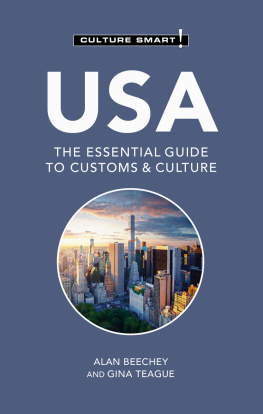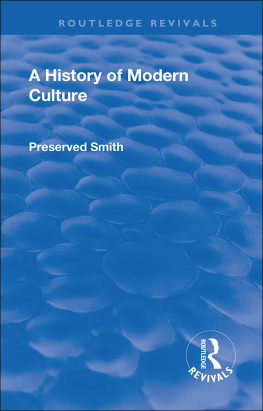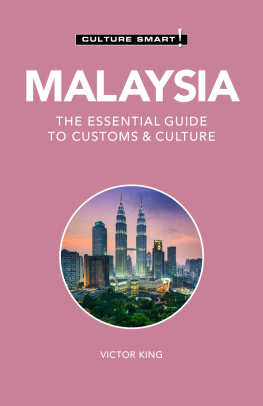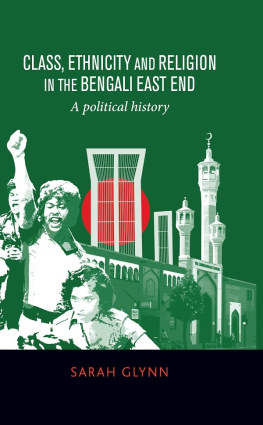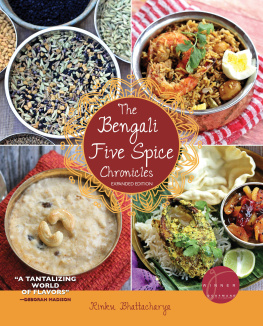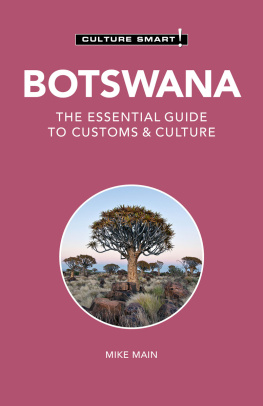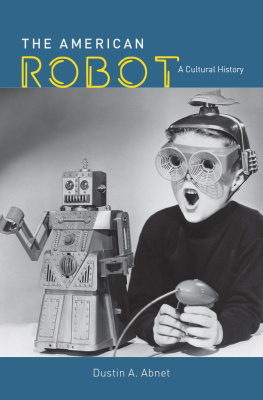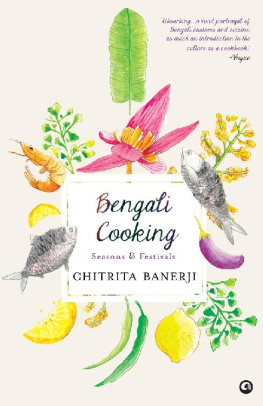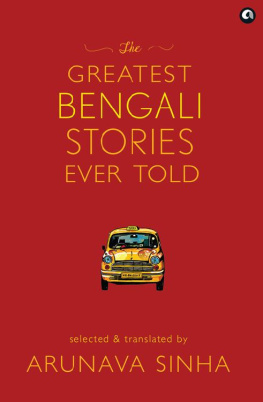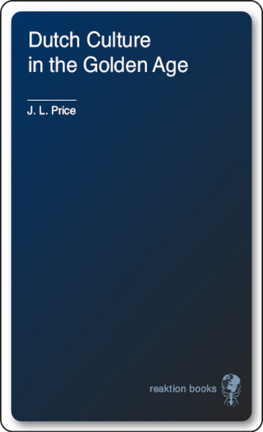Bengali
Culture
Over A Thousand Years
Ghulam Murshid
Translated from
the original Bengali
Hajaar Bochhorer Bangla Samskriti
Sarbari Sinha

Published by
NIYOGI BOOKS
Block D, Building No. 77,
Okhla Industrial Area, Phase-I,
New Delhi-110 020, INDIA
Tel: 91-11-26816301, 26818960
Email:
Website: www.niyogibooksindia.com
Text Ghulam Murshid
Translation Sarbari Sinha
Editor: Mohua Mitra
Design: Shraboni Roy
ISBN: 978-93-86906-12-0
Publication: 2018
All rights are reserved. No part of this publication may be reproduced or transmitted in any form or by any means, electronic or mechanical, including photocopying, recording or by any information storage and retrieval system without prior written permission and consent of the Publisher.
Printed at: Niyogi Offset Pvt. Ltd., New Delhi, India
Dedicated to

Purabi Basu
Shafi Ahmed
Swarochish Sarker
the first three readers of this book
Contents
TRANSLATORS NOTE
We live in troubled times. Almost everywhere in the world, the walls are growing taller and more rigid as people turn away from history and ignore narratives that speak of shared destinies. More than ever before, this is the time to tell and share stories on the basis of recorded history instead of hearsay and social myths. If histories do not come out of the confines of academia and become part of everyday conversations, myth-making and bigotries inevitably usurp the intellectual space that is left vacant. Ghulam Murshids Hajar Bochhorer Bangla Samskriti, (Dhaka, 2006) is perhaps the first book that offers ordinary Bengalis not connected with the pursuit of research an overview of their geopolitical history. The book is written for intelligent non-academic readers who might wish to dig deeper into their own history than what is retained in popular memory and dished up in school textbooks. Such a book, I felt, should be available in an English version that would be accessible to the Bengali diaspora from both Bengals.
I have retained in most places the writers use of the expression East Bengal, even when he is speaking of East Pakistan or Bangladesh. This may be confusing to young readers and people outside Bengal. The use springs from a cultural context and orientation rooted in the shared history of undivided Bengal.
I have tried to retain Dr Murshids racy, conversational style. In order to be able to do this, I have sometimes strayed from literal translation while remaining faithful to the content. Now and then I felt constrained to add, with Dr Murshids approval, a few sentences to make the context clear to a readership that may not be familiar with certain aspects of Bengali culture. On the other hand, I have sometimes omitted, again with Dr Murshids approval, details that might not make sense in translation, especially in the sections on language and music. But I alone am responsible for any errors that might have crept into the translation. I am grateful to Dr Murshid for allowing me to translate this wonderful book. Translating it was a great learning experience.
Sarbari Sinha

Boats anchored by a river in Bengal
Photo courtesy: Suriajay (commoms.wikimedia.org)
THE BEGINNING
When the Greek king Menander met the Buddhist sage Nagasena, the latter asked him, Maharaj, you have come in a chariot. But what is a chariot? In reply, the king explained that a chariot was a vehicle on wheels drawn by horses. The sage asked, Is the horse the same as the chariot, then? No, said the king. Were the wheels the same as the chariot? No again, and so it went. If it is so tricky to come up with a definition of a chariot, it may seem virtually impossible to define a culture. Indeed, the various definitions of culture offered by sociologists are by no means either simple or straightforward. Nor very concise. Culture is not something you can define in clear-cut, unambiguous terms. It is not made up of one or two things, it is an infinitely complex concept.
The definition of culture formulated by Edward Taylor in the second half of the 19th century is generally accepted as the classic definition. According to that definition, a comprehensive pattern of beliefs, conduct, behaviour and knowledge may be called culture. Language, literature, ideas, religion and beliefs; codes of behaviour, social values and rules; festivals and rituals; art; and the tools needed in everyday lifeall this makes up a culture. The refinements, accomplishments and habits that one picks up as a social being are also part of culture. Like the horses and the wheels of the chariot, these individual components of culture are visible enough. It is not quite as easy to define a culture in its entirety, which develops gradually over centuries. It is like the air that we breathe in, which we can feel all the time but cannot see.
We are born as animals. It is culture that makes us human. It makes us social creatures. It is through culture that we come to possess values, thinking minds and attitudes, as well as concepts and ideas. It is culture that refines our minds and tastes. On the other hand, certain kinds of cultural environment can turn human beings into beasts. In a word, it is culture that makes us what we are. It is difficult to give a clear definition of culture, and I will not try to do so. Instead, I will straight away embark on writing a history of culture. I assume that readers will figure out what I am talking about as they make their way through the book.
But even if we do not attempt a definition of Bengali culture, it is necessary to set out the defining limits of this culture if one must write a history of it, though of course, I must say again, it is not an easy thing to do. Not easy, because though the myriad components of a culture catch our eyes, whether they combine into a clear pattern, and from what point of time in history they do so, is not always so clear. The flowers with which Time has strung the garland of Bengali culture are prominent enough, but the thing of beauty created out of them in the form of the garland is not as clearly perceptible. That is why I will start my discussion with the horse and the wheel, rather than the chariot. We will try to see when this culture started acquiring a character of its own, what its components were, when they became integrated and how they have changed with time. I trust that a general idea of Bengali culture will emerge from these discussions.
It is of course important to point out right at the beginning that Bengali culture is not homogeneous or monolithic. Just as Bengali society is fragmented into many sections, Bengali culture is also tinged with many hues. Going by political boundaries, this society can now be divided into two almost equal parts. On religious lines, too, this society is dividedmainly between the Hindu and Muslim communities. Yet, those are not the only divisions. For, within the same religious community there are many walls of separation. The community of upper-caste Hindus, for instance, does not at all resemble that of lower-caste Hindus, though their gods and goddesses may bear the same names. Even small differences in religious belief may be enough to create unbridgeable distances between different sections, and between individuals. So much so that people divided by such beliefs may not be able to accept food from each other.
A famous Bengali poet had the surname Dutt and was a Kayastha by caste (jati). This poet strung a new chord in Bengali culture. Yet, the act of adopting a different religion cast him far out of the pale of his own community. The Bengali society of his time did not exactly embrace him with open arms, despite his gigantic contribution to Bengali literature. Rabindranath Tagore was responsible for putting Bengali in the global literary map. But it took a long time for the Bengali Muslim community to accept him as one of its own. Even a section of Bengali Hindus took a long time to accept him without reservation. The fog of religious belief was able to cloud up even the sun-like brilliance of his genius. Differences of religion and caste apart, there are barriers between rural and urban Bengali communities. The differences in dialect between the different regions in Bengal are also not negligible. In sum, Bengali society does not signify a uniform, undivided community.
Next page

